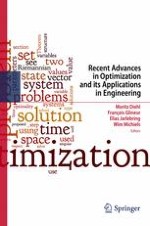Mathematical optimization encompasses both a rich and rapidly evolving body of fundamental theory, and a variety of exciting applications in science and engineering. The present book contains a careful selection of articles on recent advances in optimization theory, numerical methods, and their applications in engineering. It features in particular new methods and applications in the fields of optimal control, PDE-constrained optimization, nonlinear optimization, and convex optimization. The authors of this volume took part in the 14th Belgian-French-German Conference on Optimization (BFG09) organized in Leuven, Belgium, on September 14-18, 2009. The volume contains a selection of reviewed articles contributed by the conference speakers as well as three survey articles by plenary speakers and two papers authored by the winners of the best talk and best poster prizes awarded at BFG09. Researchers and graduate students in applied mathematics, computer science, and many branches of engineering will find in this book an interesting and useful collection of recent ideas on the methods and applications of optimization.
